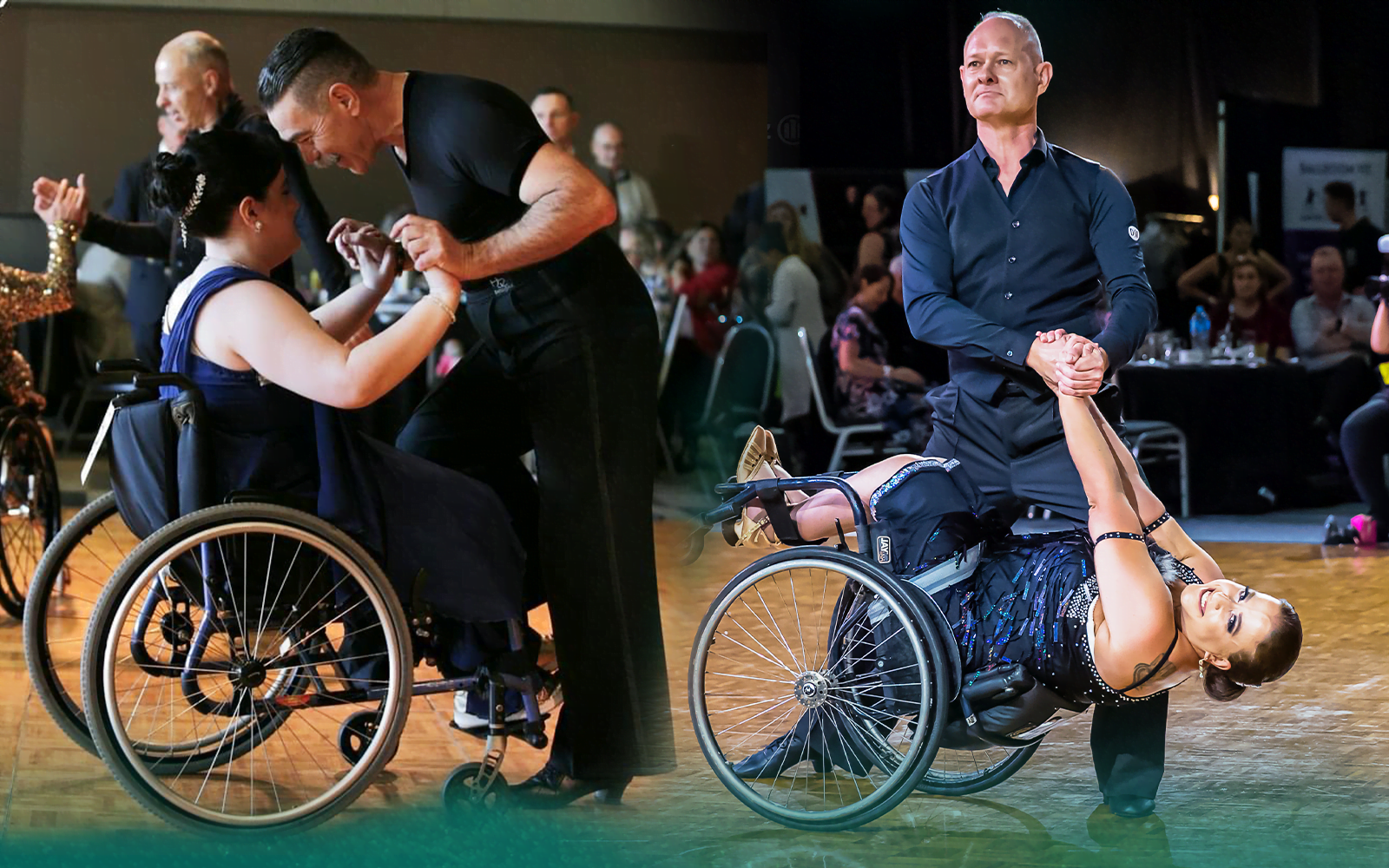Danielle Stitfall concedes she was “shaking like a leaf” the first time she competed in Para-DanceSport.
Stitfall had been involved in a couple of demonstration performances, but the 2018 Australian Championship in Melbourne was her debut competing against other dancers.
“I was still learning what I needed to do, what it needed to look like and I was thinking ‘Is this going to look silly?’” she said.
“But it was now or never, so I pushed through the doubts and went out there. I didn’t need to worry because it was greatly received, everyone loved the performance.”
Help share the life-changing gift of sport: Donate today.
Stitfall is hoping for a similar reception when she and her able-bodied dance partner Darryl Davenport, as well Amanda Smith and her partner Peter Hegarty, represent Australia at the Tokyo Para Dance Sport International Competition on August 5 and 6.
It’s the first time Australia has featured at an International Paralympic Committee event and comes just five years since the sport emerged domestically, after originating in Sweden in 1968.
The Para-DanceSport scene in Western Australia has led the growth, under the administration of Para and Ability Dance WA. It incorporates competitions for athletes who either use a wheelchair, are vision impaired or intellectually impaired.
Competitions in Australia cover three styles – Latin, standard ballroom and new vogue. Internationally, Latin and standard ballroom are contested.
“Standard ballroom is kind of like a waltz or foxtrot, and Latin is obviously tango, samba, rumba,” Stitfall explained.
“I compete in all three styles – because, why not? – but I’m competing in Tokyo in the standard ballroom and the freestyle categories. Freestyle is where you can combine styles and have music of your choice.”
Stitfall, who has spina bifida, trains three times a week and competes about once a month. She said there was an inclusive and tight knit family of participants.
“Growing up, I was really shy,” she said. “I’m quite a reserved person, I don’t like public speaking and avoid things like that as much as I can.
“But get me up on a dance floor and I’ll dance in front of thousands of people and I’m totally fine. It’s been really good for me, it’s improved my self esteem and given me a lot of self belief. It’s really collaborative and creative.
“I tried a lot of different sports when I was growing up – basketball, athletics, swimming, all those things – but I’ve been doing it now for five years and absolutely love it.”
Stitfall made special mention of dance partner Davenport, who “believed in me when I didn’t believe in myself”.
Join AUS Squad: the official cheer squad of the Australian Paralympic Team
Para-DanceSport has had an equally positive impact on Smith, who also has spina bifida. Smith said her dance partner, Hegarty, was very patient and the pair had built a good friendship.
“I really enjoy it,” she said.
“I found out about it through one of the other Para-dancers. She posted something about it on Facebook and I decided to give it a go. I was a bit nervous but the more I did it the more I liked it.
“I’m glad I’ve found something that I’m able to do. It gets me out of my comfort zone and it’s making me more confident.”
By: David Sygall, Paralympics Australia
Posted: 4 July 2023
Image: Gotcha! KW and Anna Di Vincenzo.


 Join AUS Squad
Join AUS Squad

